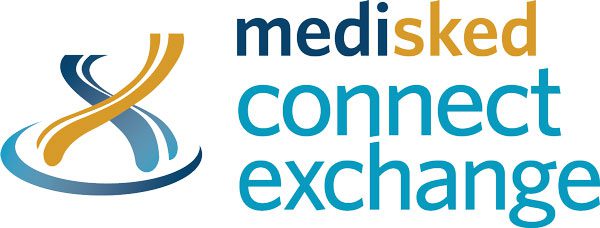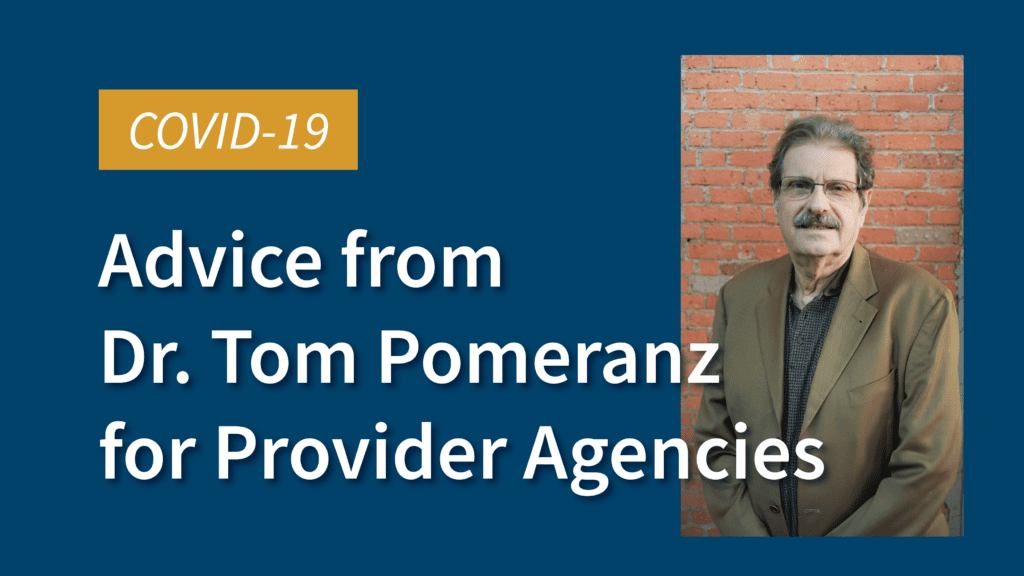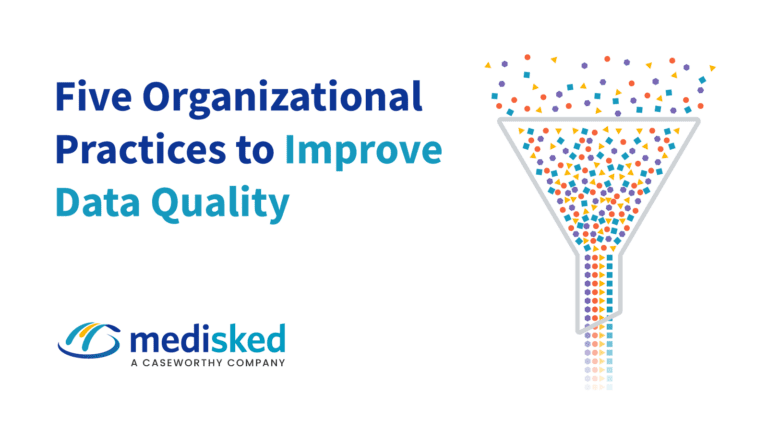The first and foremost right of the people we support is the right to be safe and healthy. When developing protocols for COVID-19, Dr. Pomeranz feels we must think of both the front-end and back-end processes. This blog will focus mostly on the back-end processes, which is how you handle COVID-19 administratively and managerially.
If you want more information on the front-end processes, the clinical pieces that are also incredibly important – you can read more about them on the CDC’s website.
According to the CDC:
- Healthcare workers caring for patients with COVID-19 are at elevated risk for exposure.
- There is no vaccine to prevent COVID-19, nor medications to treat it.
- The potential public health threat posed by COVID is very high to the United States and globally.
Knowing these facts, Dr Pomeranz has assembled guidance for provider agencies to ensure the health and safety of the people supported and employees. All of this guidance is based on the wise and prudent person theory – ‘The 5 W’s’ of: what was known, who knew it, when did they know it, what did they do about it, and when did they do it. Here’s what he shared:
1. Form a committee: The first thing agencies need to do, regardless of size, is to form a committee. A diverse group of 4-5 people (clinical services nurse, HR, management level person, front line supervisor, a DSP). The committee needs to be developing guidance, direction, and oversight for the entire agency.
2. Utilize nursing staff expertise to disseminate educational materials and host trainings: Everything we do is to support the welfare of the people we support. There is also responsibility to protect the employees. If a nurse is employed or under contract, the nurse should review everything they can from CDC. Develop flyers or brochures, or extrapolate these materials from the CDC website, that can be given to every employee who will be expected to read and sign off that they have read it. Nurses should also host trainings with the staff on the appropriate protocols.
3. Contact physicians to develop plans: Nursing or other designated personnel should contact every individual’s physician to identify the protocol to be followed if a person shows signs and symptoms. The answer may be different for each person depending how high-risk they are.
4. Identify and designate staff: Decide which staff will and will not be assigned to individuals who are infected. This is highly important as providers don’t want to find themselves with staff who won’t work with people who have contracted the disease. These are tough discussions, but they need to happen early and cannot be made by default. Questions may have to be asked and answered multiple times.
5. Make sure everyone has had the flu shot: Suggested by CDC, make sure all employees and clients have had the flu vaccine. It doesn’t protect against COVID-19 but preventing other health issues during this time is critical to reduce the burden on the healthcare system.
6. Create correspondence to share with circles of support: Create informational emails to be sent to all families as soon as possible. Develop a standard email that imparts a sense that the agency is on top of everything, will keep them informed of their loved ones status, and include a designated contact person for the organization. This message should also include actions that may be taken (like no home visits, no visits from families, etc.). Follow up with hard copy if possible.
7. If applicable, make decision about stopping home visits: A decision needs to be made about which decisions or criteria would stop home visits. Social distancing is an effective method of diluting the spread of the disease. Every hour the government offers additional guidance on best practices that should be followed.
8. Offer virtual options for social togetherness to reduce isolation and loneliness: Because COVID is so disruptive to the lives of the people we support and their families, strongly consider using Facetime or other virtual options to keep people in contact and limit isolation.
9. If applicable, decide if day supports will continue: Decide whether to stop the attendance of day supports. If yes, agencies need to immediately put in place home-based day supports (tending to a garden, going to a park, etc.)
-This may be expensive and not reimbursable.
-Providers should start to detail of all expenses they’re making in response to this situation. At some point, there may be restitution.
10. Make hand sanitization recommendations: It’s difficult to keep your hands away from your face. Decide how often to help people sanitize their hands – both contingently and non-contingently.
11. Develop a policy for employees regarding alternative childcare measures: Have a discussion with DSPs about how they will respond as schools are closing. As providers, you may need to consider setting up the option for childcare for DSPs so they can still come to work.
12. Remember to keep the process person-centered – keep individuals aware and educated: Make sure you explain what is happening to individuals you support. There will be a lot of changes, which can be upsetting for everyone.
13. Document everything you are doing: Document and keep a log of everything your team is doing regarding the response. This is particularly important to be able to write a policy once the dust settles. The policy can emanate from the lessons learned and best practices from the COVID-19 experience.
14. Develop protocol for staff: Decide when staff come on duty what the protocol will be.
– You may require staff to stop at the front door, take temperature, and sanitize hands.
– Specify what cleaners to use in by name, which surfaces to be cleaned and how often.
– Standardized message posting at the front door (think poster board size) stating what you want every person to know who is entering a building.
15. Create communication loop with the health department: There needs to be a communication loop with the health department. All feedback needs to be provided back to the steering committee, so the entire organization is on the same page.
16. Develop policy for positive tests: Decide who needs to be informed if a person who is supported returns a positive test result.
17. Remember that this is all temporary: Be sensitive that once COVID-19 passes, we must remove many of these procedures. These protocols are in response to a set of circumstances. They should not be in place all the time as it would revert our field back to the medical model and erase the gains we’ve made over the last half century.







